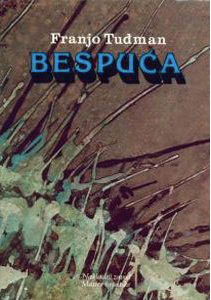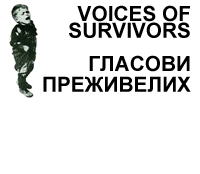DENIAL WATCH
We must fight denials because the denial of genocide is a crucial symbolic and ideological process which not only follows every genocide after it has taken place, but is a process which is intended to desensitize and make possible the emergence of new forms of genocidal violence to peoples in the future.
Charny, Israel W.,The denial of Holocaust and genocide. Proceedings of the 1992 World Conference Against A & H Bombs, Hiroshima and Nagasaki, August 2-9, pp. 44-45.
...denials of known events of genocide must be treated as acts of bitter and malevolent psychological aggression, certainly against the victims, but really against all of human society, for such denials literally celebrate genocidal violence and in the process suggestively call for renewed massacres -- of the same people or of others.
(Charny, 1991)
___________________________________________________________________________________________________________
We must fight denials because the denial of genocide is a crucial symbolic and ideological process which not only follows every genocide after it has taken place, but is a process which is intended to desensitize and make possible the emergence of new forms of genocidal violence to peoples in the future.
Charny, Israel W.,The denial of Holocaust and genocide. Proceedings of the 1992 World Conference Against A & H Bombs, Hiroshima and Nagasaki, August 2-9, pp. 44-45.
...denials of known events of genocide must be treated as acts of bitter and malevolent psychological aggression, certainly against the victims, but really against all of human society, for such denials literally celebrate genocidal violence and in the process suggestively call for renewed massacres -- of the same people or of others.
(Charny, 1991)
___________________________________________________________________________________________________________
Quotations from “Wastelands of Historical Reality” by President of Croatia Franjo Tudjman
Mythical Holocaust figures
Mythical Holocaust figures
"The estimated loss of up to 6 million dead is founded too much on emotional biased testimonies and on exaggerated data in the post-war...squaring of accounts with the defeated...; that can be concluded, among other things, by the fact that even in serious books... greatly multiplied data on Jasenovac are presented. The claim is made that 770,000 were killed there, including 20,000 Jews, even though...the Jews from Croatia...were deported to the East, while some found salvation in the Italian zone. And when the Jasenovac mythical figure appeared realistic, then it is not surprising that even Malaparte's invented basket of eyes becomes duplicated, probably for the sake of greater authenticity."
(1) (Franjo Tudjman, Bespuća povjesne zbiljnosti- Rasprava o povijesti i filozofiji zlosilja [Wastelands of Historical Reality- A discussion of the history and philosophy of violence] second edition, Nakladni zavod Matice Hrvatske, Zagreb, 1989, page 156)
Now what evidence is offered for the denying that six million Jews were killed? That even serious, well-researched books claim that 20,000 Jews were killed in Jasenovac.
What evidence is offered to reject the 20,000 figure? That some Jews survived in Italy and others were deported to the East. Furthermore, that Curzio Malaparte's horror novel-reportage Kaputt, includes fiction.
Of course it does. Malaparte's books are part war reporting, part dreams and nighmares, and sometimes outright fabrications, as Malaparte laughingly admits in his famous human-hand-in-the-soup tale.
To sum it up, the future President of Croatia denies the 6 million figure, on the basis of his denial that 20,000 Jews died in Jasenovac, which is in turn denied on the basis of his denial that a nightmare image appearing in Kaputt was true. It is not in the least unthinkable that Malaparte may have seen a basketful of eyes in Pavelic's office. It is not unusual for men engaging in massacres to collect tokens of their victories. (2) More horrifying things were done in the Independent State of Croatia than gathering basketfuls of eyes after wiping out a village.
Jews in Jasenovac provoked the slaughter of non-Jews
‘The explanation for the behavior of Jews who “jealously kept the monopoly of the management inside the camp and took the initiative in provoking not only individual but also mass slaughters of the non-Jews, Communists, partisans and Serbs ", was made by [Ante] Ciliga in view of the specific features of the Jewish religion and mentality. "The Old Testament harshness and unreasonableness, Moses' double yardstick, two kinds of regulations on the same matter and act, according to whether it referred to Jews or non-Jews and finally Moses' Commandments: God orders you to exterminate others and take their place because you are the chosen people," all these principles in one way or another "govern the whole group " and lead to their ruthless dominant self-confidence and relentlessness: "You kill others to take their place to save yourself and your group ". More intelligent and educated on the average than the others "the Jews carried out this mutual extermination more intelligently and farsightedly to their own benefit". From their point of view this was "justified and moral."
(Tudjman, op.cit., page 320)
In the above unfortunate paragraph, the future President of Croatia Franjo Tudjman quotes the words of Ante Ciliga, a Croat political activist and professor, who spent a year in Jasenovac, where he was allowed to write in his private room. He was then released, to work within the Ustasha regime and in Nazi Germany. The problem for President Tudjman is that he quotes Ciliga's opinions as an authoritative source on Jewish psychology, not as the odd words of a strange confused personality.
(1) This quote President Tudjman appeared in a longer, complicated sentence that we have shortened to make it intelligible. To avoid charges that we quoted him out of context, what follows is the quoted paragraph in its entirety:
"That the estimated loss of up to 6 million dead is founded too much on both emotional biased testimonies and on exaggerated data in the post-war reckonings of war crimes and squaring of accounts with the defeated perpetrators of war crimes, can be concluded among other things by the fact that even in serious books (such as N. Levin's unquestionably is) is evidenced, for example, a highly Multiplied data on Jasenovac with the assertion that of the allegedly 770,000 killed there, 20,000 Jews were killed even though it is stated that the Jews from Croatia under German orders were deported to the East and partly that they found salvation in the Italian zone. And when the Jasenovac mythic figure seemed to be realistic, than it is no surprise that even Malaparte's invented basket of eyes becomes duplicated probably for the sake of greater authenticity of such data and testimonies."]
(2) It is common, when massacre becomes state policy or army policy, to keep tokens of killings, for fun or profit. In 1744, the Governor of Massachussets offered bounty for Indian scalps. In 1756, Governor Robert Morris offered 150 dollars for scalps of men; however, the bounty for scalps of women and children under 12 was only 50 dollars. The British outlawed the practice, and that became one of the complaints of colonists who challenged the rule of the King of England.
‘The explanation for the behavior of Jews who “jealously kept the monopoly of the management inside the camp and took the initiative in provoking not only individual but also mass slaughters of the non-Jews, Communists, partisans and Serbs ", was made by [Ante] Ciliga in view of the specific features of the Jewish religion and mentality. "The Old Testament harshness and unreasonableness, Moses' double yardstick, two kinds of regulations on the same matter and act, according to whether it referred to Jews or non-Jews and finally Moses' Commandments: God orders you to exterminate others and take their place because you are the chosen people," all these principles in one way or another "govern the whole group " and lead to their ruthless dominant self-confidence and relentlessness: "You kill others to take their place to save yourself and your group ". More intelligent and educated on the average than the others "the Jews carried out this mutual extermination more intelligently and farsightedly to their own benefit". From their point of view this was "justified and moral."
(Tudjman, op.cit., page 320)
In the above unfortunate paragraph, the future President of Croatia Franjo Tudjman quotes the words of Ante Ciliga, a Croat political activist and professor, who spent a year in Jasenovac, where he was allowed to write in his private room. He was then released, to work within the Ustasha regime and in Nazi Germany. The problem for President Tudjman is that he quotes Ciliga's opinions as an authoritative source on Jewish psychology, not as the odd words of a strange confused personality.
(1) This quote President Tudjman appeared in a longer, complicated sentence that we have shortened to make it intelligible. To avoid charges that we quoted him out of context, what follows is the quoted paragraph in its entirety:
"That the estimated loss of up to 6 million dead is founded too much on both emotional biased testimonies and on exaggerated data in the post-war reckonings of war crimes and squaring of accounts with the defeated perpetrators of war crimes, can be concluded among other things by the fact that even in serious books (such as N. Levin's unquestionably is) is evidenced, for example, a highly Multiplied data on Jasenovac with the assertion that of the allegedly 770,000 killed there, 20,000 Jews were killed even though it is stated that the Jews from Croatia under German orders were deported to the East and partly that they found salvation in the Italian zone. And when the Jasenovac mythic figure seemed to be realistic, than it is no surprise that even Malaparte's invented basket of eyes becomes duplicated probably for the sake of greater authenticity of such data and testimonies."]
(2) It is common, when massacre becomes state policy or army policy, to keep tokens of killings, for fun or profit. In 1744, the Governor of Massachussets offered bounty for Indian scalps. In 1756, Governor Robert Morris offered 150 dollars for scalps of men; however, the bounty for scalps of women and children under 12 was only 50 dollars. The British outlawed the practice, and that became one of the complaints of colonists who challenged the rule of the King of England.

